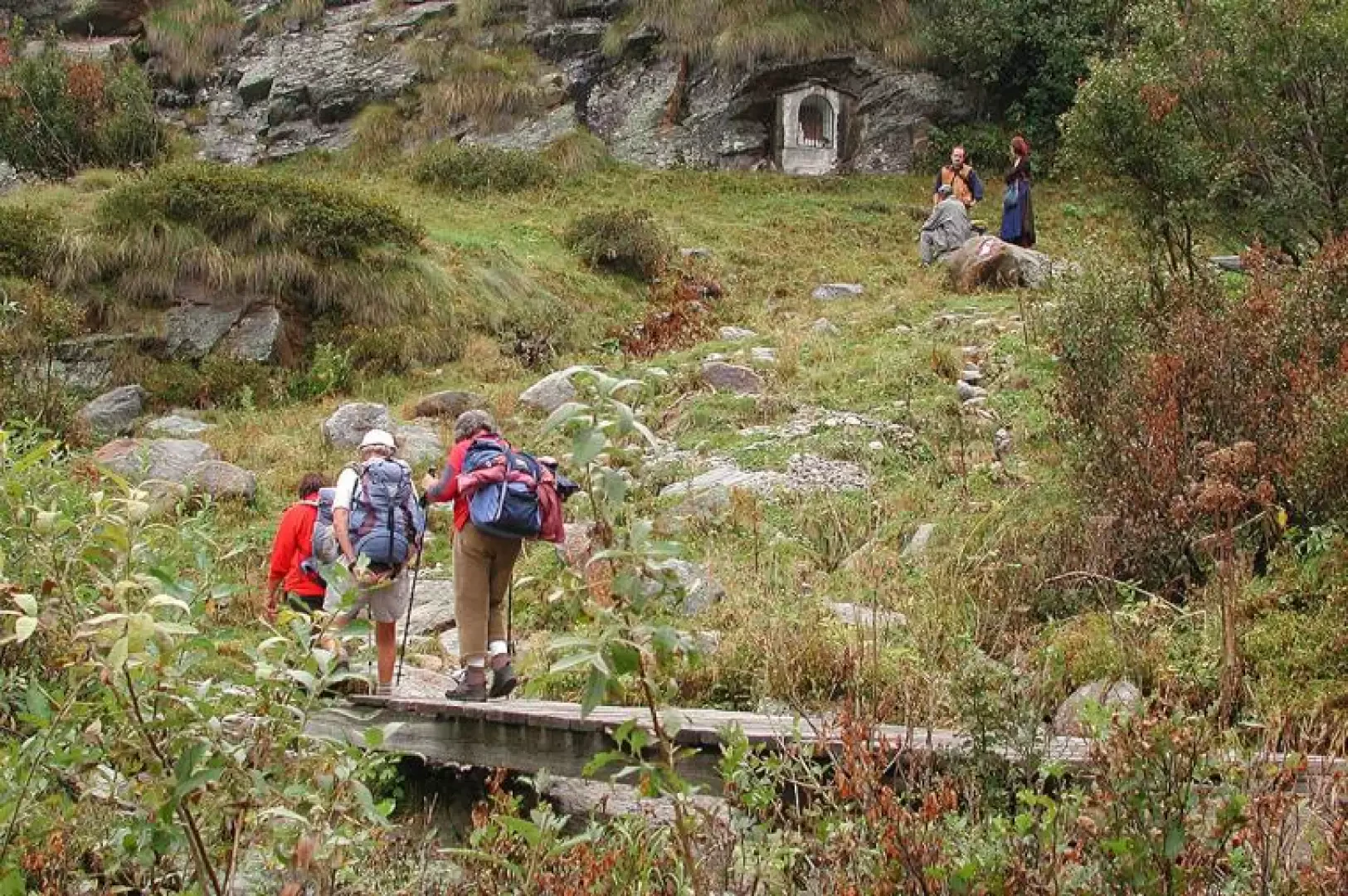Chapel of Flua

Access
Take the road to Valsesia at the Ghemme exit of the Voltri Sempione, and continue to Alagna, looking for the large car park at Wold (1267m), north of the village. Here there is a shuttle bus that takes participants to the Acqua Bianca. The route to this point can also be done on foot in 40 minutes.
.Introduction
The Walser Despite the differences between the various Walser communities, further accentuated by migration, their traditions maintained a certain unity. The village was the centre of their life, the place where their ancestors had lived, built by them, the place where the family lived, and the family was part of the village. Their dwellings were two- or three-storeyed, built of logs stacked one on top of the other and joined together, surrounded by covered balconies, so that despite the rainy weather one could move around without getting wet and the products of agriculture could be dried in the dry. The floor plan was square, comprising a stable, the barn above, and the living part. The inhabitants were very close, they helped each other, the doors of the houses were open to each other, all the members of the families participated in communal life, also engaging in activities useful to the community, such as the maintenance of paths, pastures, hydraulic works, and then helping each other in caring for the elderly and the sick, using medicines made from medicinal herbs. The heritage linked to the events of Walser life has been partly lost, and it is only thanks to the memories of older people that the memory of certain traditions has been preserved. In Alagna, festivals were celebrated between December and March, months in which work in the countryside was reduced due to the winter season. During this period, young people would meet and then marry. The whole village participated in the feast, the young women dressed in white, the brides in blue, the widows in purple. Religious festivities were particularly heartfelt, during Holy Week no one worked. Civil life was closely linked to religious life, religion influenced human behaviour from birth to death, and religiosity was experienced very intensely. In the upper part of the stube, the wood-panelled room with the stove (stube, in fact), a small window was left open when a family member died so that his or her soul could come out, and which was then immediately closed again, a cross was stamped on the bread as a sign of thanksgiving, and next to the bed there was a stoup containing holy water during Holy Week, to be used when prayers were said. The Walser arrived in Alagna from Macugnaga via the Turlo pass, colonising Mud, Pedemonte and Oubre Rong, while the Otro alp was occupied by settlers coming later from Gressoney.
.Description
From Acqua Bianca (1497m), so called because of a beautiful waterfall, we climb up along the mule track to the Barba Ferrero refuge, following the signpost [7]. The mule track goes through a beautiful larch wood and arrives at a clearing with several huts and signs for other itineraries; we pass the Fum Bitz alpine pasture, and at this point the route narrows and becomes a path, which first climbs gently, until it touches on the Sesia, then for a stretch on steps, steeper, until we reach the little Flua chapel, a niche in the face of a large rock (1850m, 1h20'). The descent time is longer than on the outward journey because on the outward journey the shuttle bus takes you to Acqua Bianca, on the return journey you walk down to 1267m Wold, stopping at the Rosario stations.
.